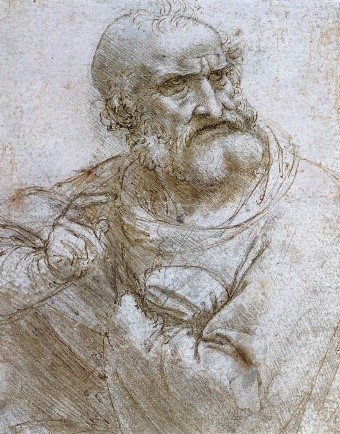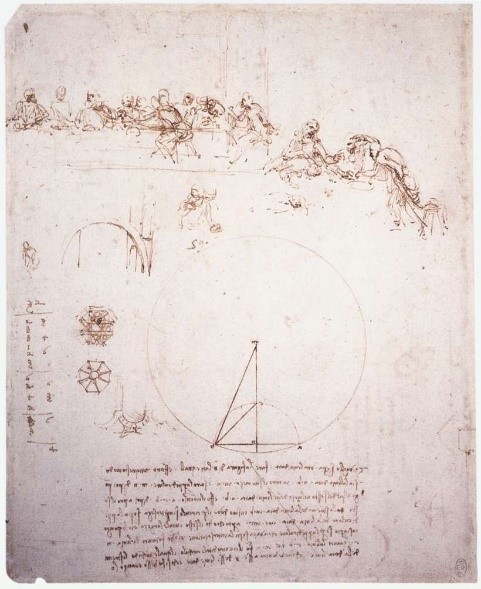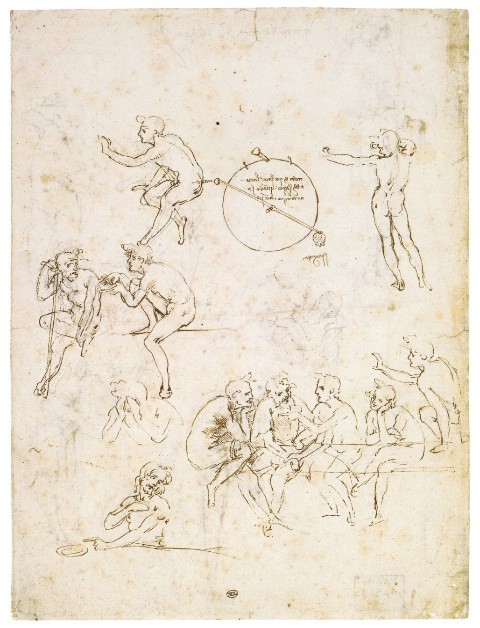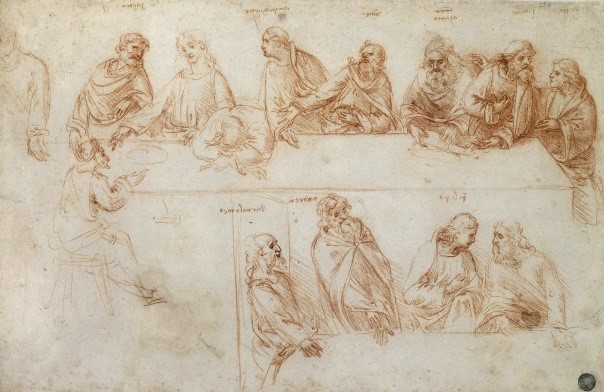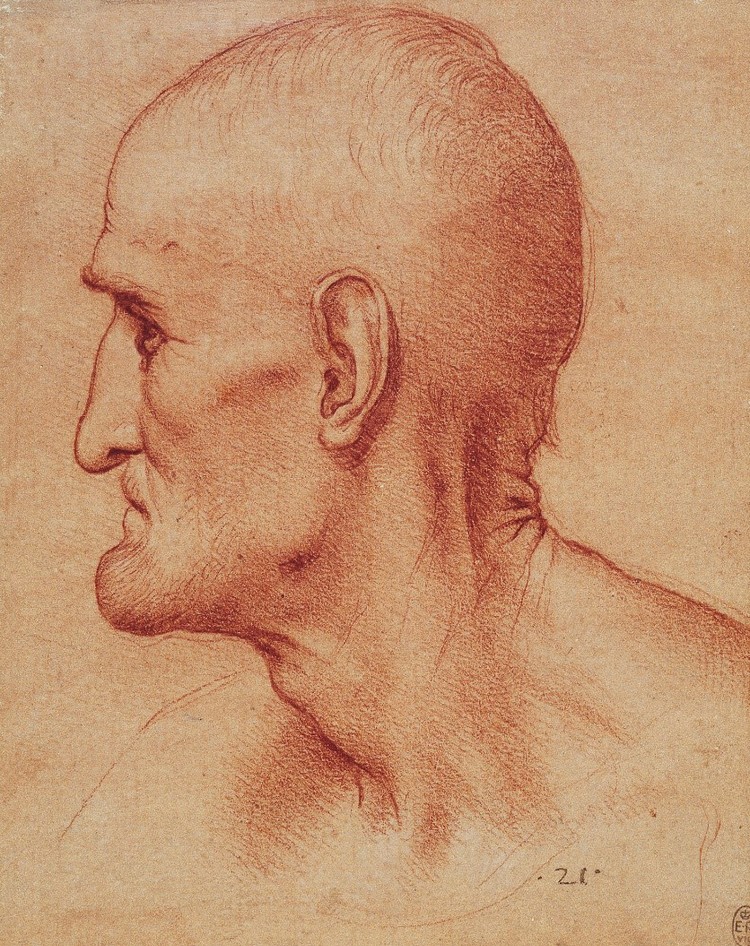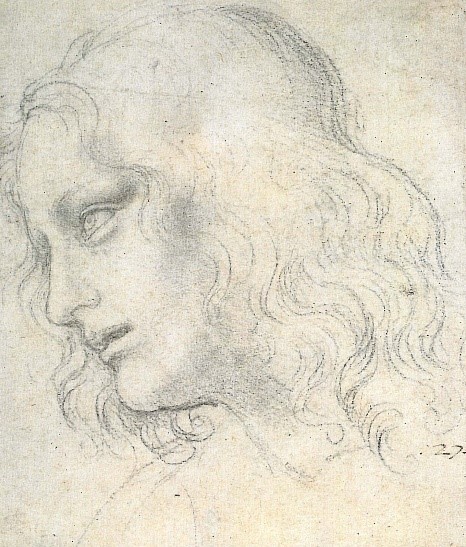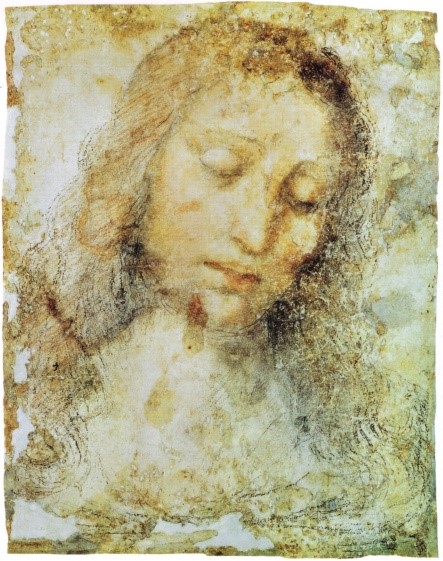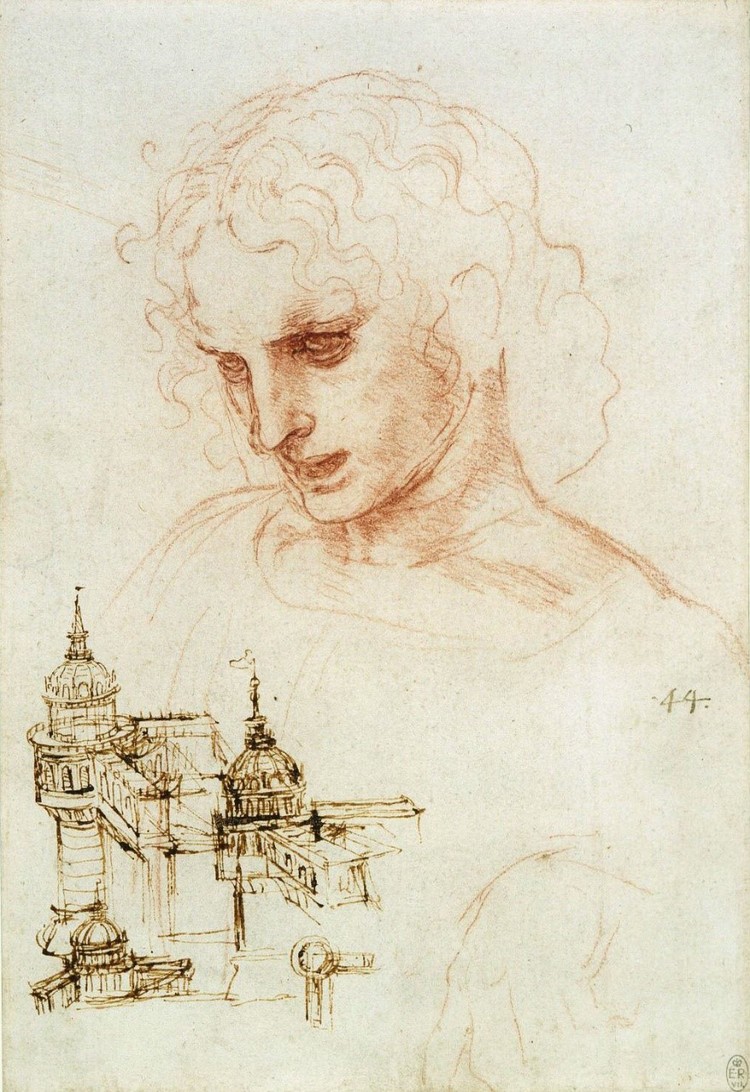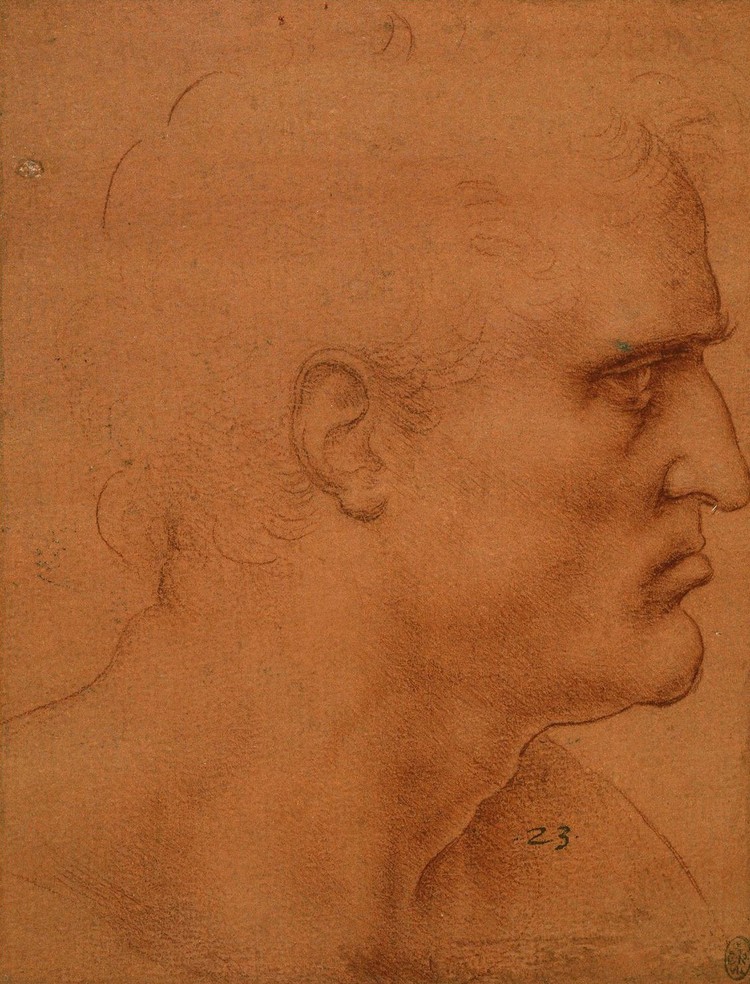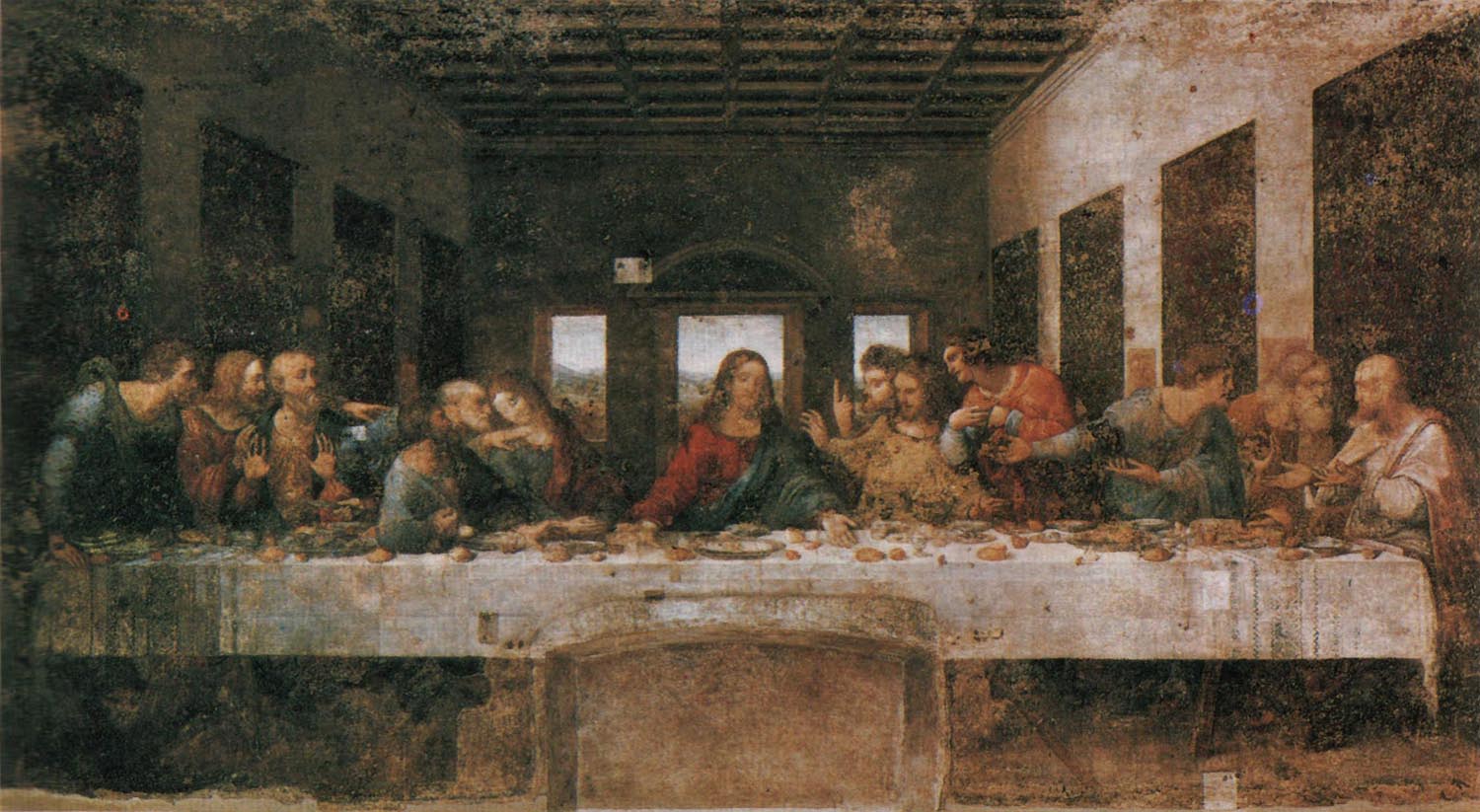
Last Supper
One of the most famous and controversial paintings in the world: From the gender of the character to the left of Jesus, to the hand holding a knife without a body. What about the Holy Grail? This painting holds it's fair share of secrets and lies.
The Last Supper
By: Leonardo & Associates
1495–1498 (possibly 10 years)
Tempera on gesso, pitch and mastic.
460 cm × 880 cm (181 in × 346 in)
Santa Maria delle Grazie, Milan
HD Version of the Last Supper
The Letters in the Arches
SF= 7,40
DVX= 500,5,10
AN= 500,90
BAR= 300,500,80
AN= 500,90
IST= 1,7,160
MA= 1000,500
LV= 50,5
BE= 300,250
SF= 70,40
DV= 500,5
PP= 400,400
AN= 500,90
MX= 1000,10
M=1000
SE= 70, 250
CO= 6,11
SF S= "septum" Latin for 7 | F= 40 forty (7,40)
DVX 500 D =Q -"quingenti" | V "(VI) - Stigma | (500,5,10)
AN A - 500 | N - Nonaginta, 90 | (500,90)
BAR B-300 | A=500 R =80| (300,500,80)
AN A -500 | N N - Nonaginta, 90 | (500,90)
IST - - septum" Latin for 7 | Possibly derived from Greek tetra, as 4 × 40 = 160. | (1,7,160)
MA - M=1000 | - 500 | (1000,500)
LV - L=50 | V=5 | (50,5)
BE - 300 - 250 | (300,250)
SF - 70 -40 | (70,40)
DV 500 - -V=5 |(500,5)
PP- 400 400 | (400,400)
AN - 500 - 90 | (500,90)
MX - M= 1,000 - X=10 | (1000,10)
M -1,000 - (1000)
SE s-70 or 7 -E -250 - (70,250)
CO - C= | _ligature of VI Greek numeral 6, stigma. O =Onze - French 11- (6,11)
Wikipedia
"The Last Supper (Italian: Il Cenacolo or L'Ultima Cena) is a late 15th-century mural painting by Leonardo da Vinci in the refectory of the Convent of Santa Maria delle Grazie, Milan. It is one of the world's most famous paintings, and one of the most studied, scrutinized, and satirized.[1]
The work is presumed to have been commenced around 1495 and was commissioned as part of a scheme of renovations to the church and its convent buildings by Leonardo's patron Ludovico Sforza, Duke of Milan. The painting represents the scene of The Last Supper of Jesus with his disciples, as it is told in the Gospel of John, 13:21. Leonardo has depicted the consternation that occurred among the Twelve Disciples when Jesus announced that one of them would betray him.
Due to the methods used, and a variety of environmental factors, very little of the original painting remains today, despite numerous restoration attempts, the last being completed in 1999.""
Bible
These are the Biblical verses about the Last Supper which it is based upon. The moment the painting depicts is when Jesus says that one of his disciples will betray him and the reactions from those sitting around him.
Mark 14:22-24
And as they were eating, he took bread, and when he had blessed, he brake it, and gave to them, and said, ‘Take ye: this is my body.’ And he took a cup, and when he had given thanks, he gave to them: and they all drank of it. And he said unto them, ‘This is my blood of the covenant, which is poured out for many.’
Matthew 26:26-28
And as they were eating, Jesus took bread, and blessed, and brake it; and he gave to the disciples, and said, ‘Take, eat; this is my body.’ And he took a cup, and gave thanks, and gave to them, saying, ‘Drink ye all of it; for this is my blood of the covenant, which is poured out for many unto remission of sins.’
1st Corinthians 11:23-25
For I received of the Lord that which also I delivered unto you, that the Lord Jesus in the night in which he was betrayed took bread; and when he had given thanks, he brake it, and said, ‘This is my body, which is for you: this do in remembrance of me.’ In like manner also the cup, after supper, saying, ‘This cup is the new covenant in my blood: this do, as often as ye drink it, in remembrance of me.’
Luke 22:19-20
And he took bread, and when he had given thanks, he brake it, and gave to them, saying, ‘This is my body which is given for you: this do in remembrance of me.’ And the cup in like manner after supper, saying, ‘This cup is the new covenant in my blood, even that which is poured out for you.’
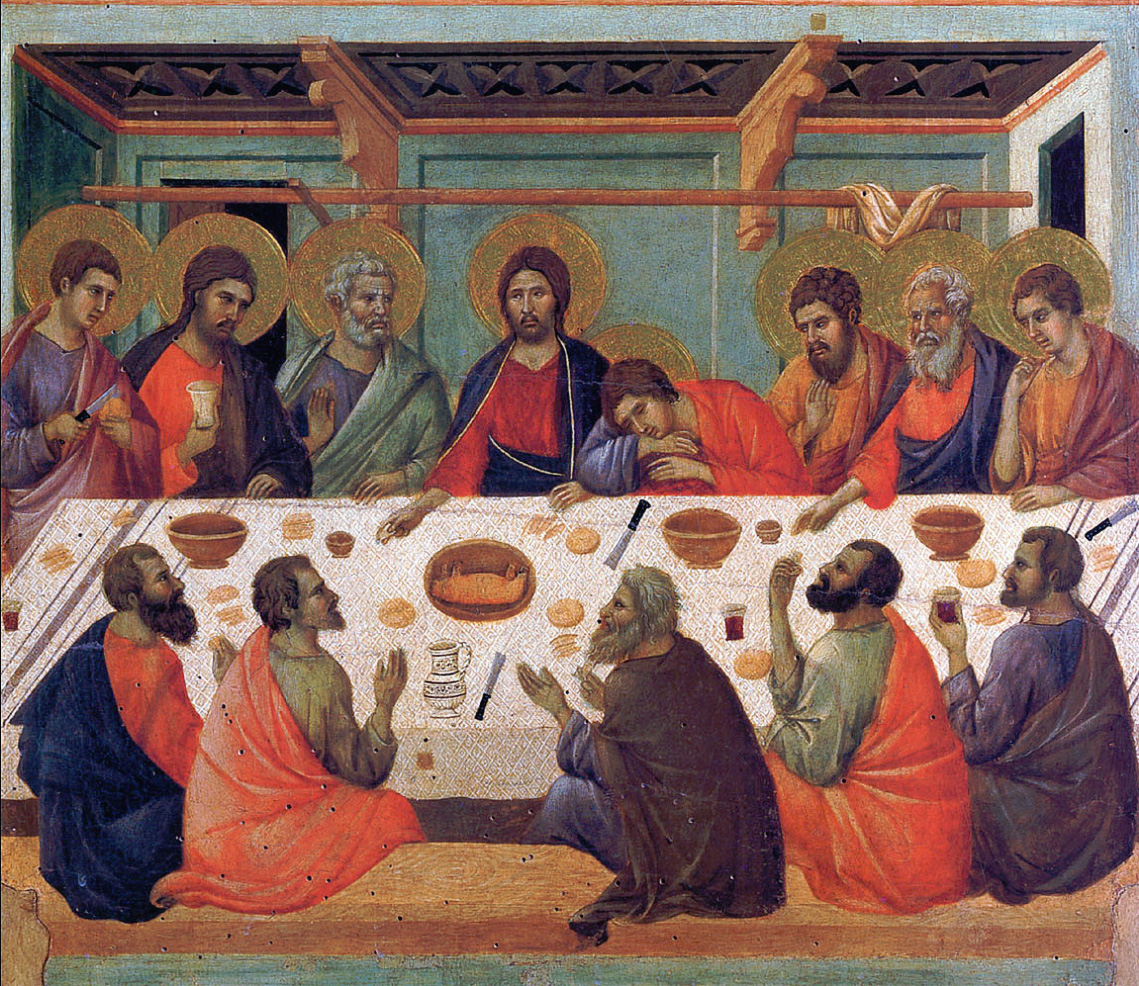
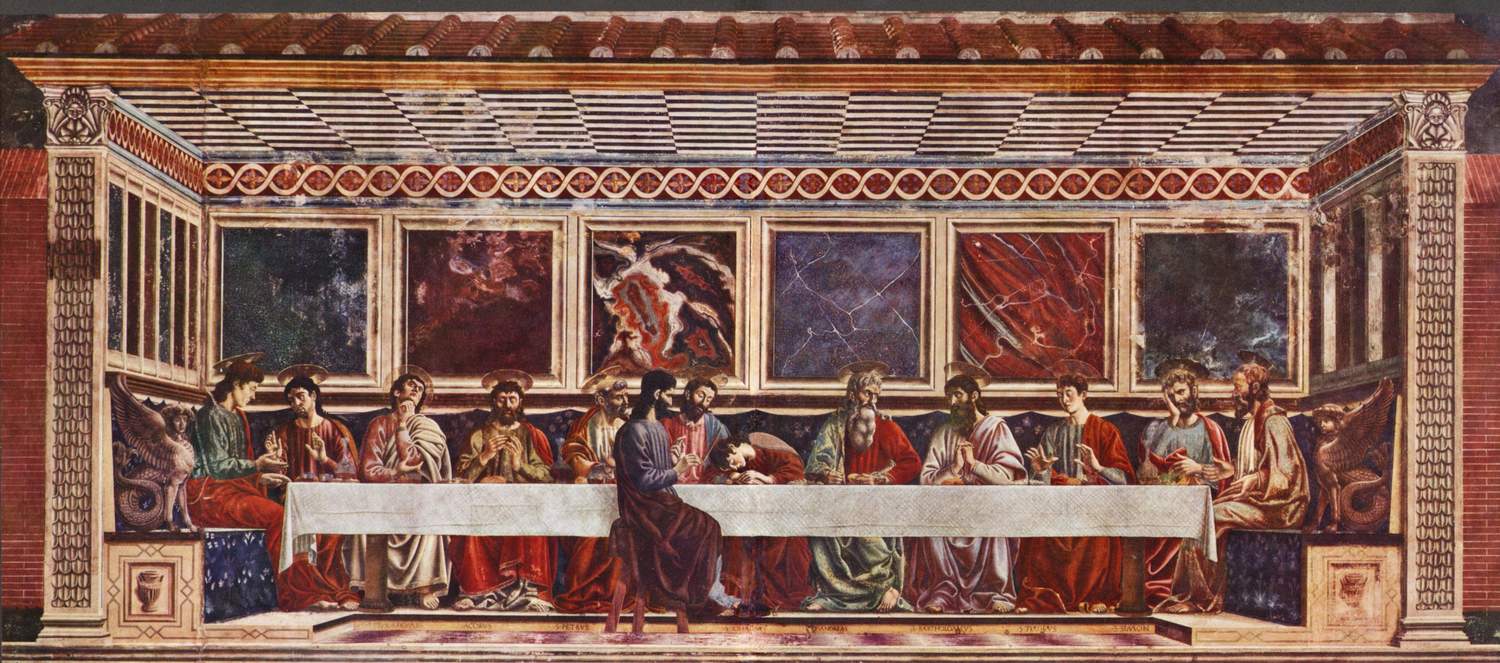
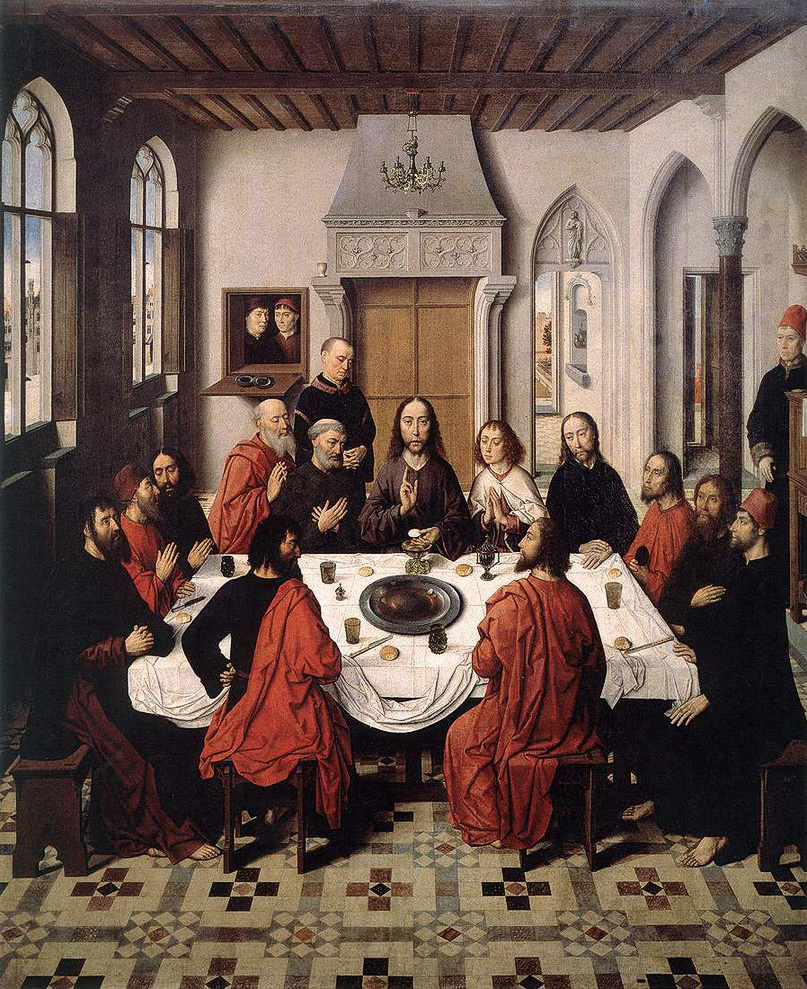
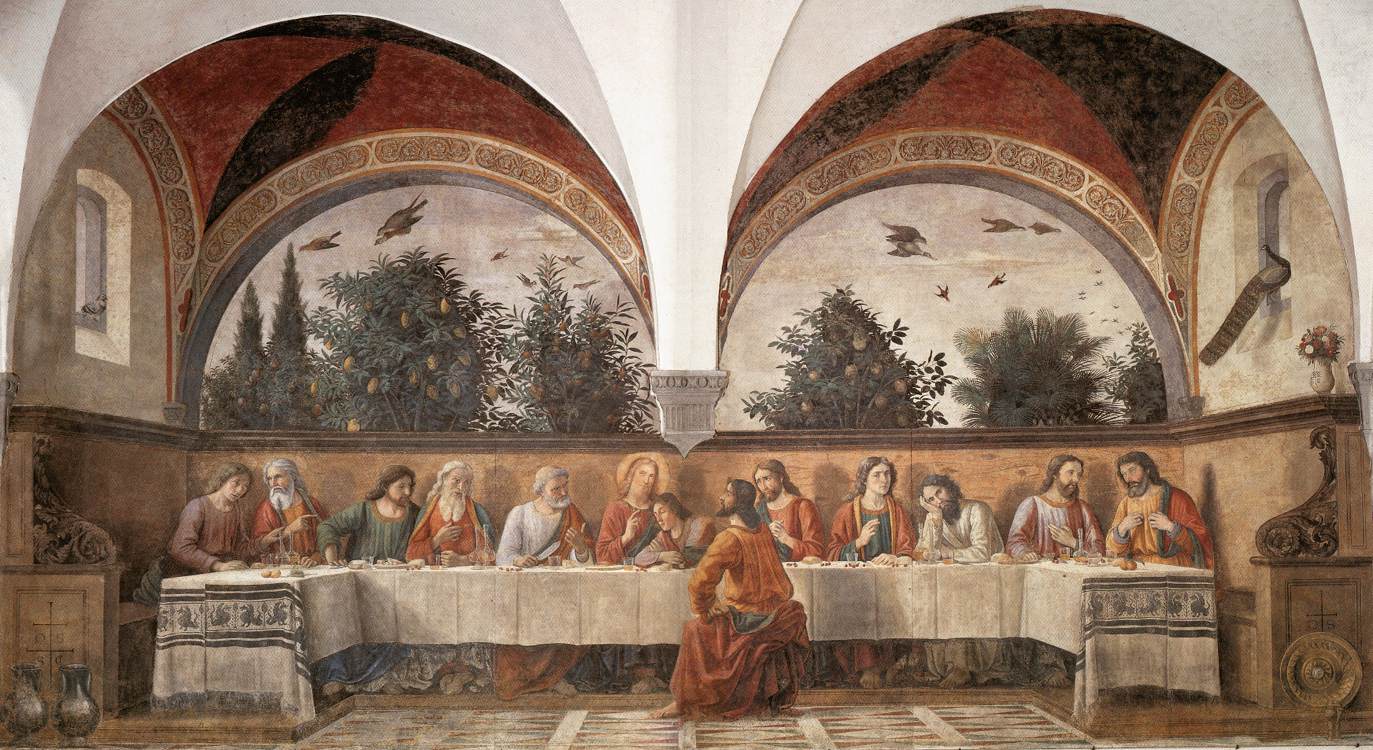
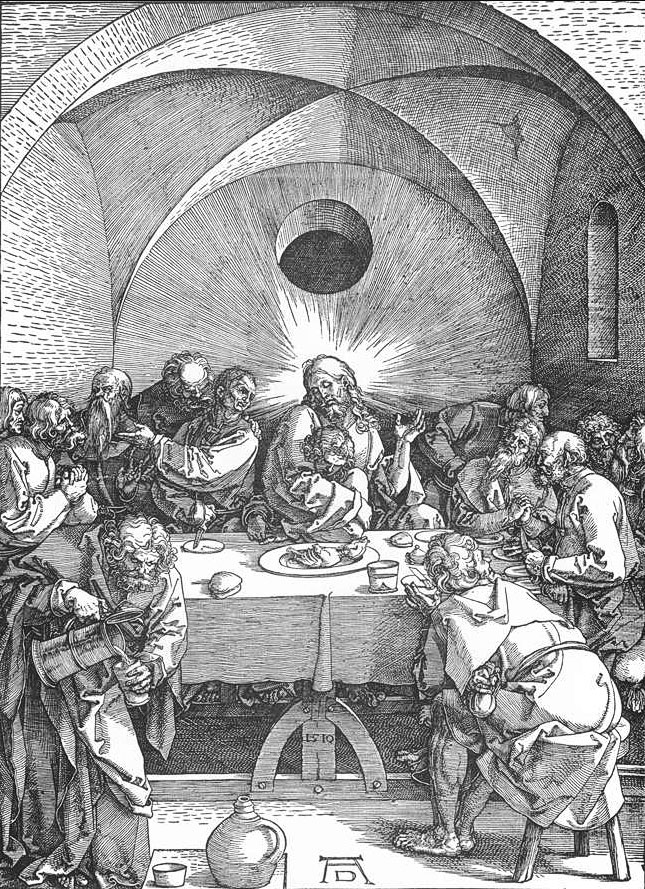
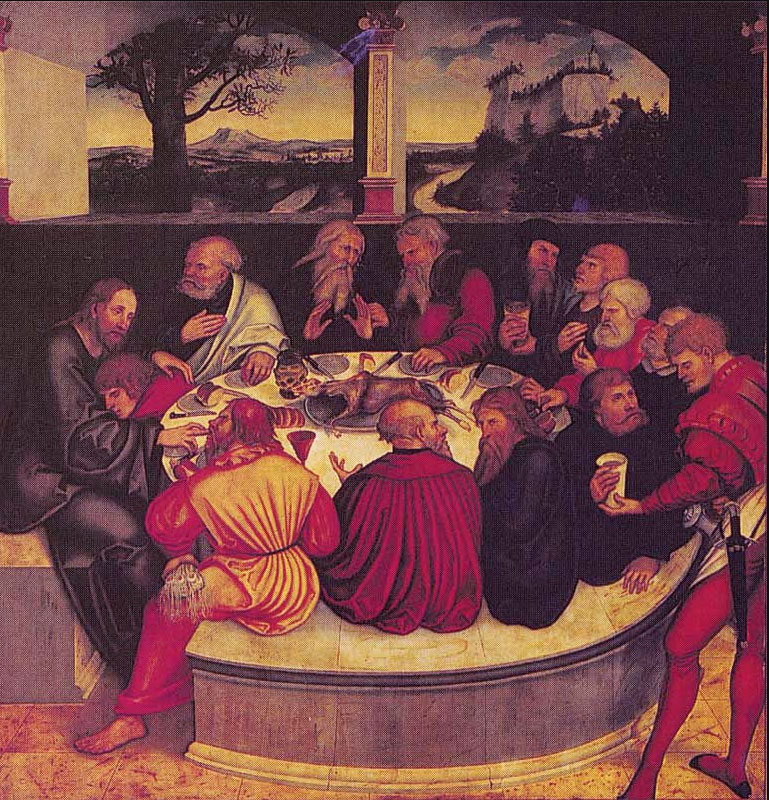
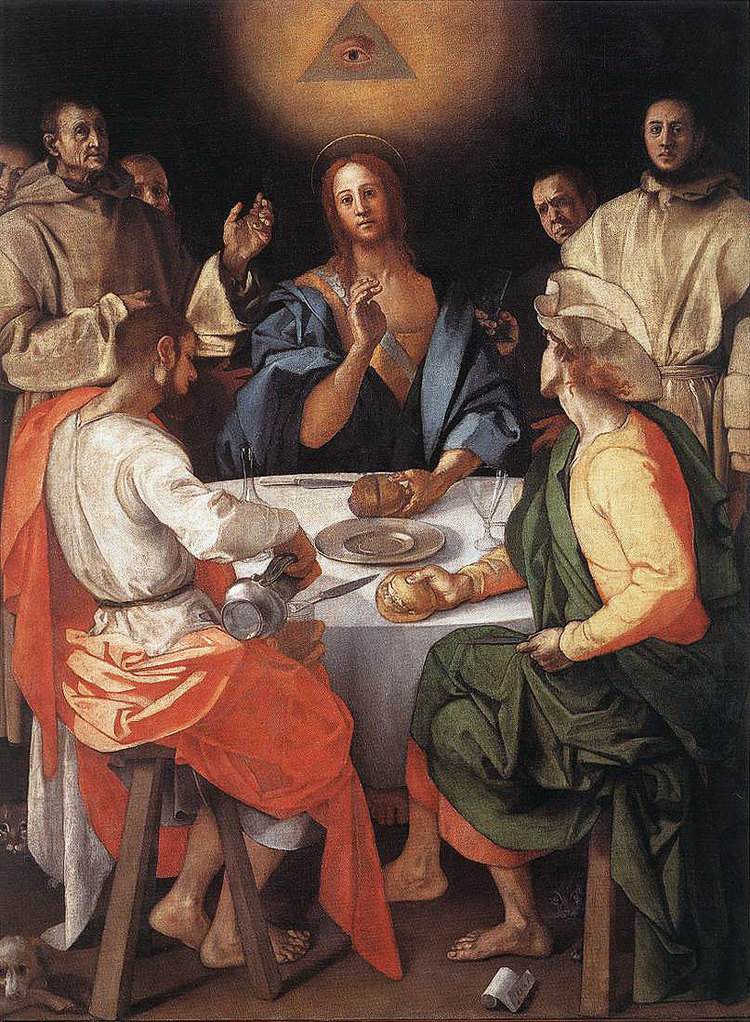
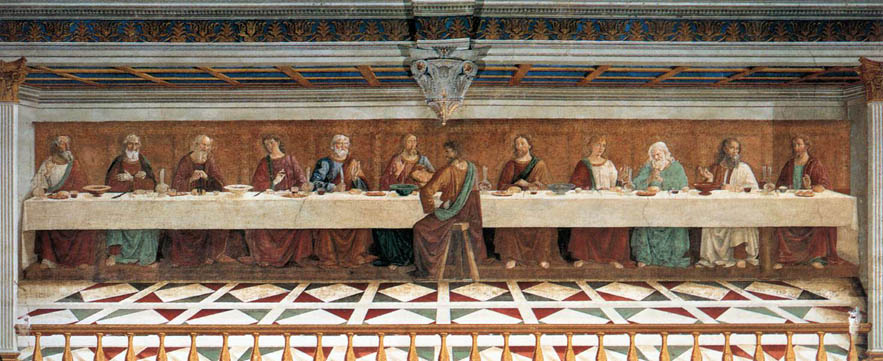
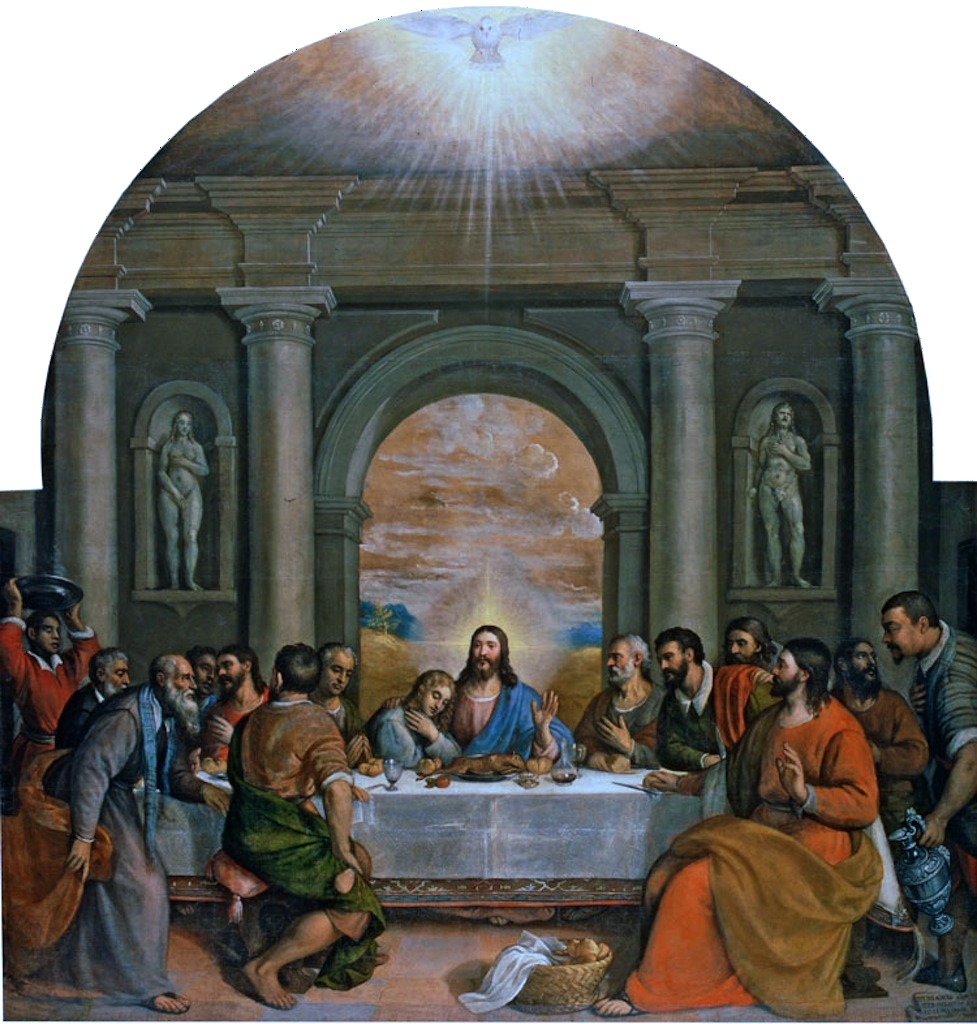
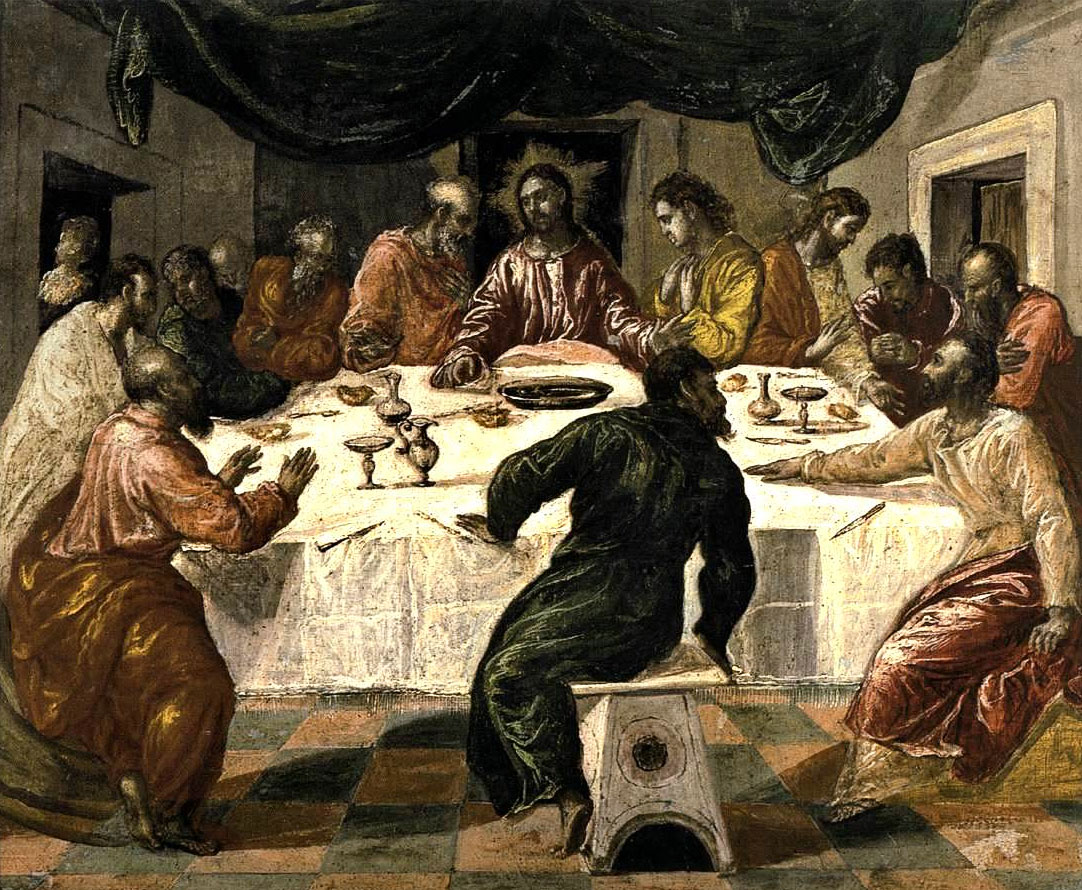
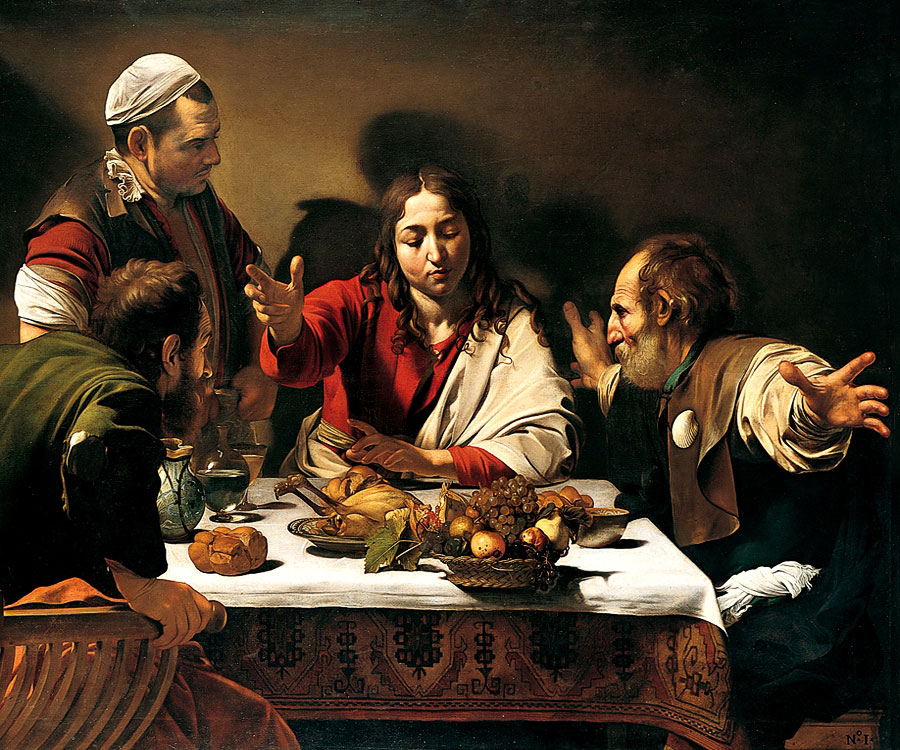
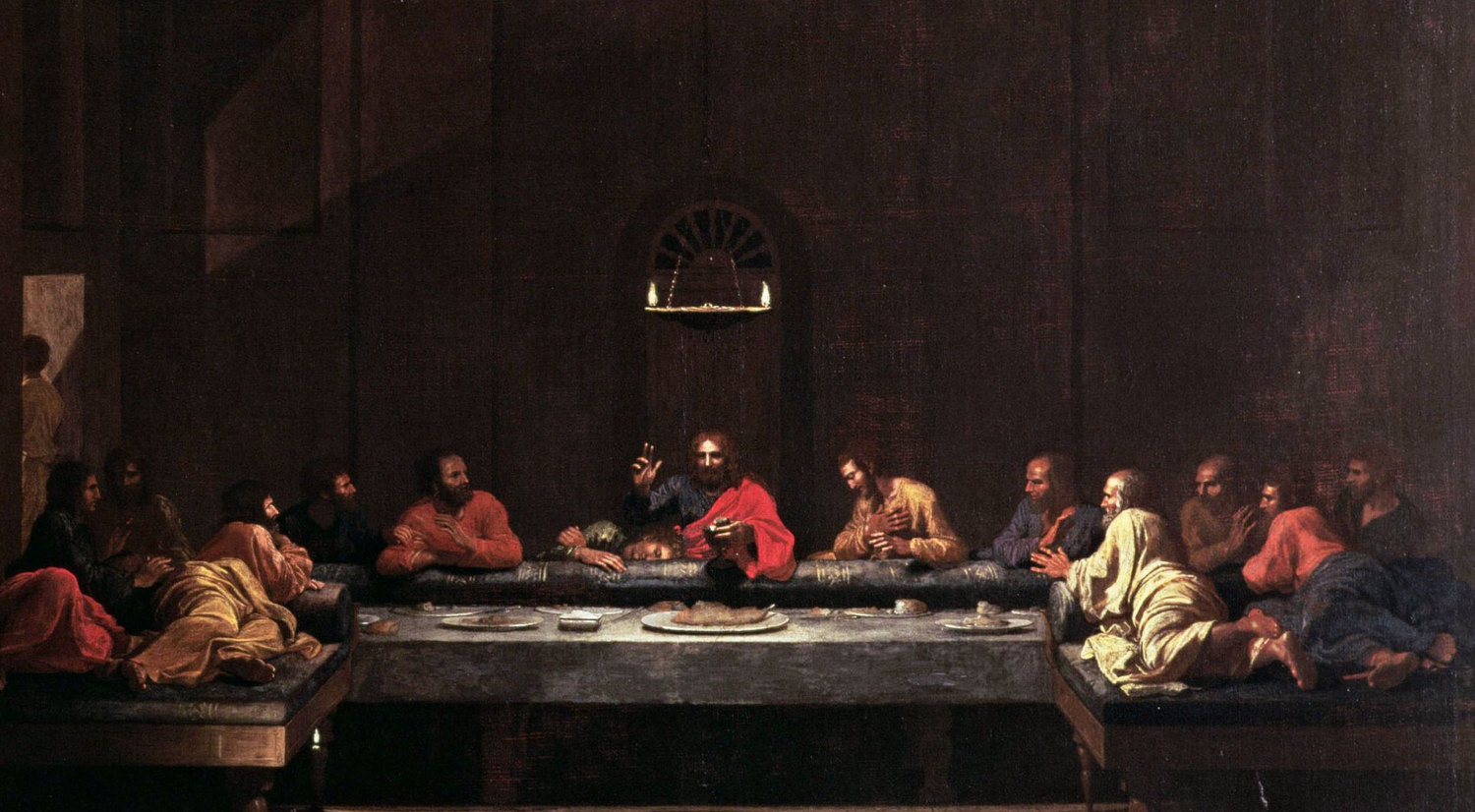
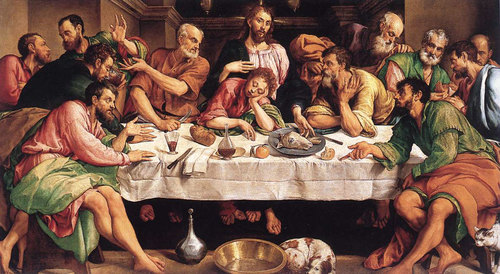
Before
While Leonardo's version has become Iconic there were people painting the "Last Supper" as a scene/subject before he painted his own. There are some that he wouldn't have seen and others that influenced his own. When trying to convert a text/ story into an actual image it can be interesting to see what various artists come up with. As soon as one person saw another's version it would influence their own even if they tried for it not to.
After Leo
Right after Leonardo's version was painted, and maybe even during, other artists started to copy it. They couldn't just take a picture and blow it back up - they had to manually draw it and then reproduce it else where. Some of these are sketches and others are almost full sized replicas. A very interesting aspect to this is that some of these could be coppies of copies and others could have been created at different times. Since the painting started to fall apart while Leonardo was still alive - the various copies from different time would all be slightly different. Not to mention the various restorations and alterations that took place in the last 500 years. This painting looks as different as these old copies as it did only 20 years ago. It creates a conundrum - what did it look like vs what it looks like now vs what Leonardo intended for it to be. The closest to the actual version as intended would probably be Sesto's copy.
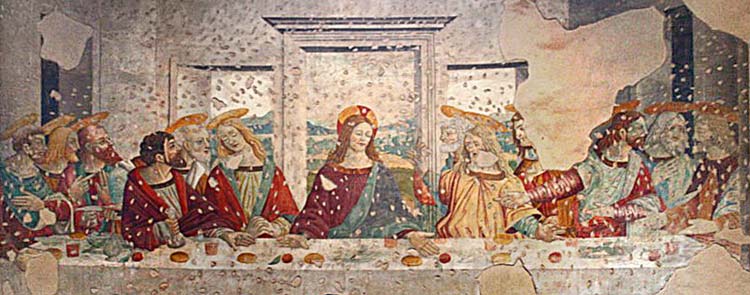
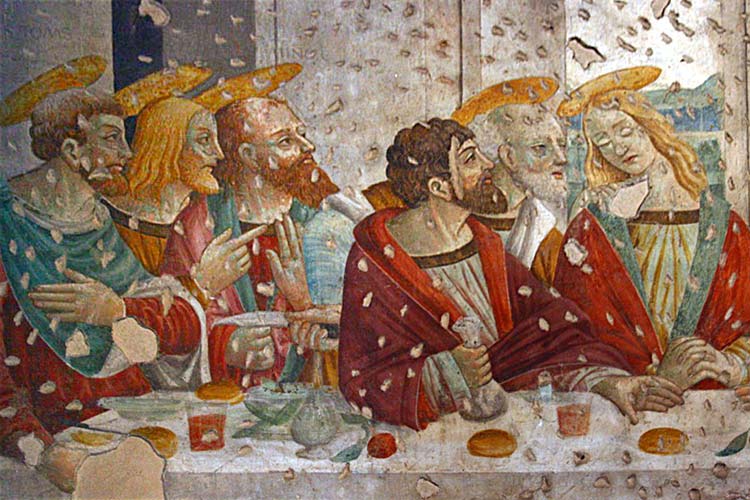
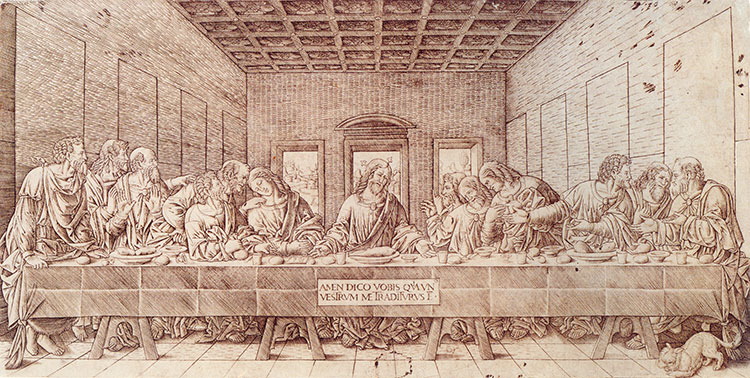
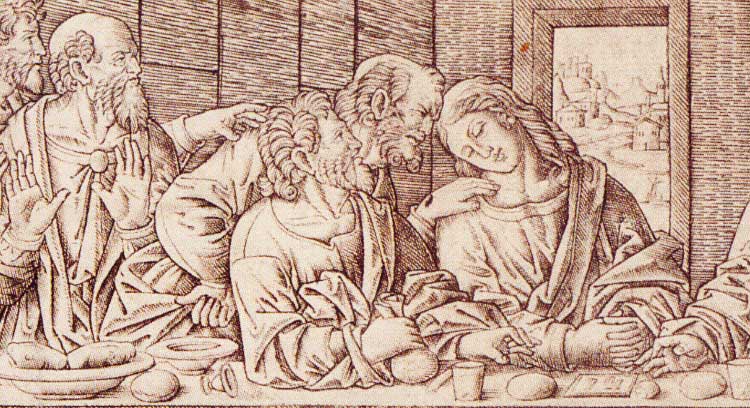
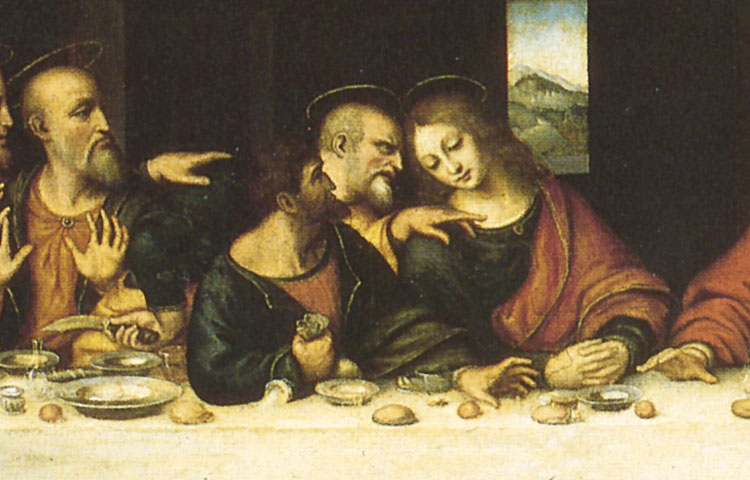
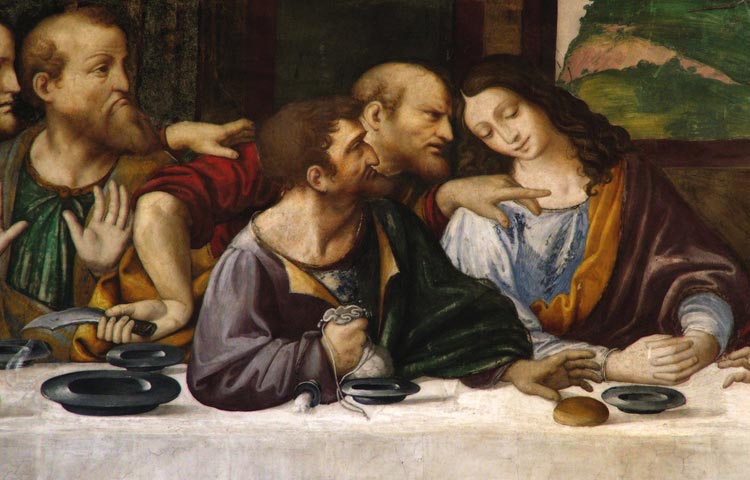
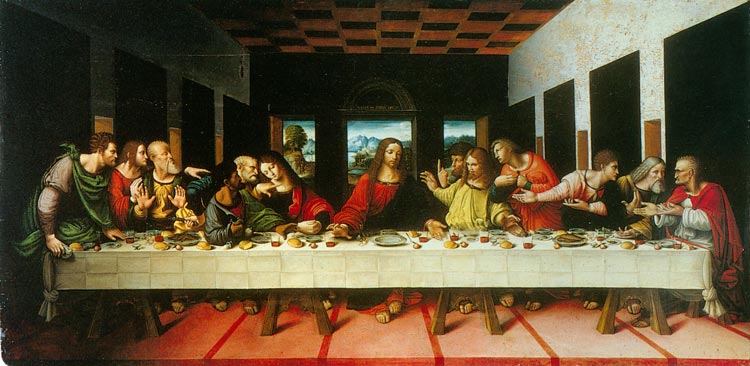
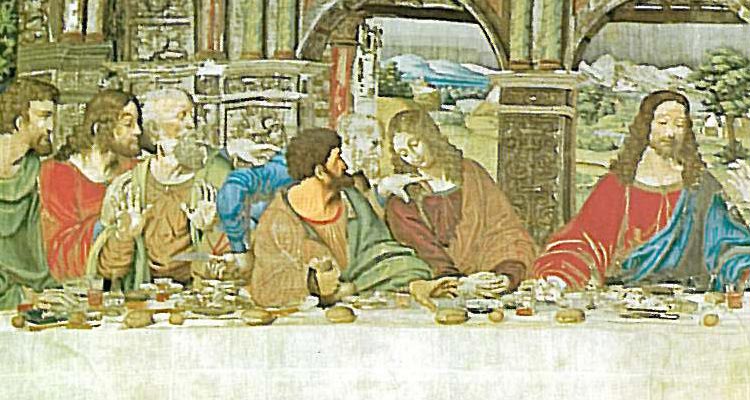
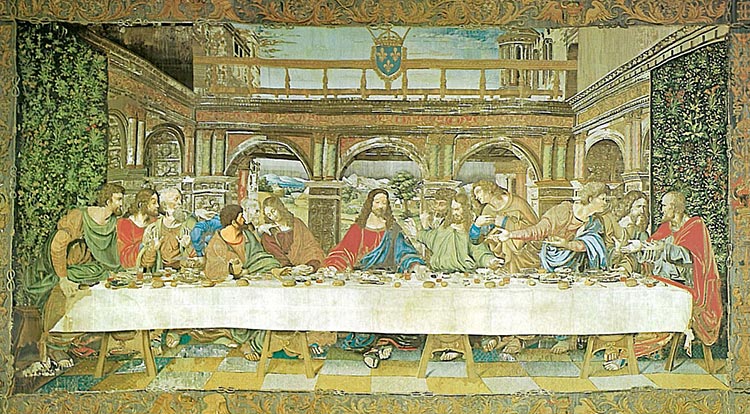

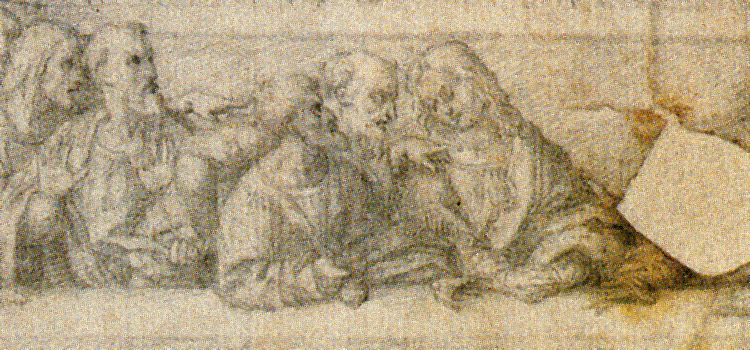
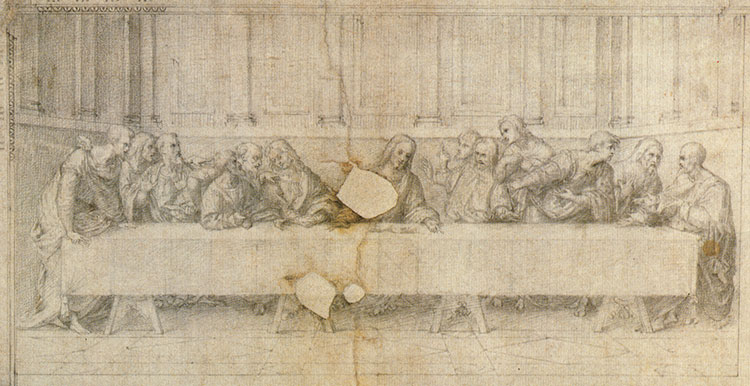
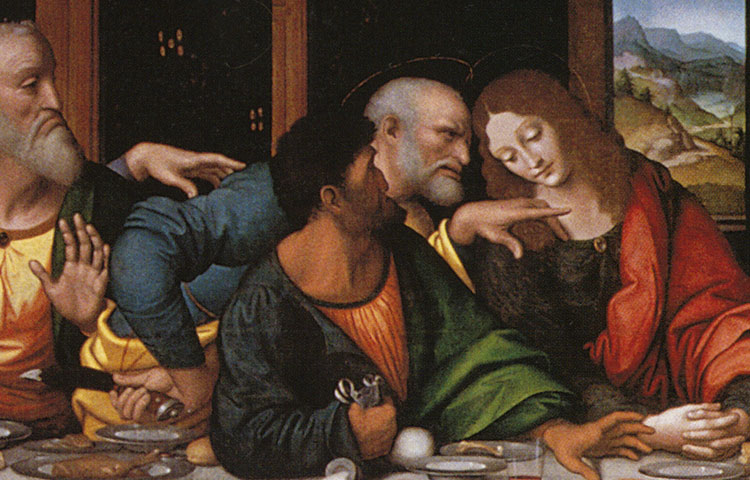
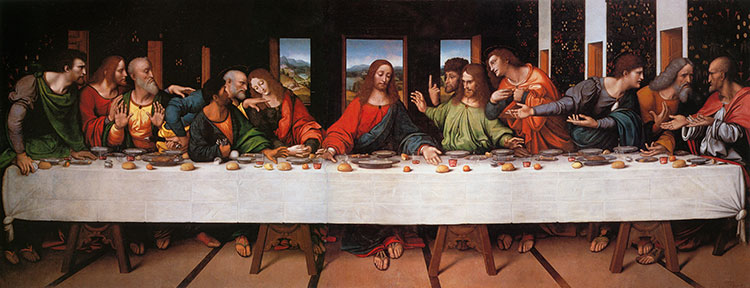
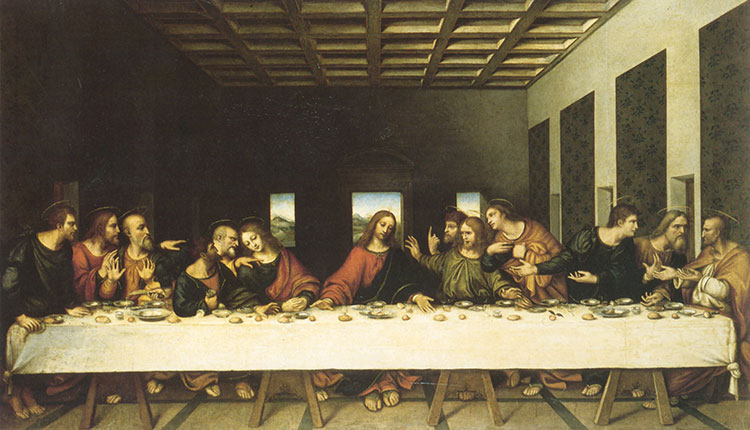
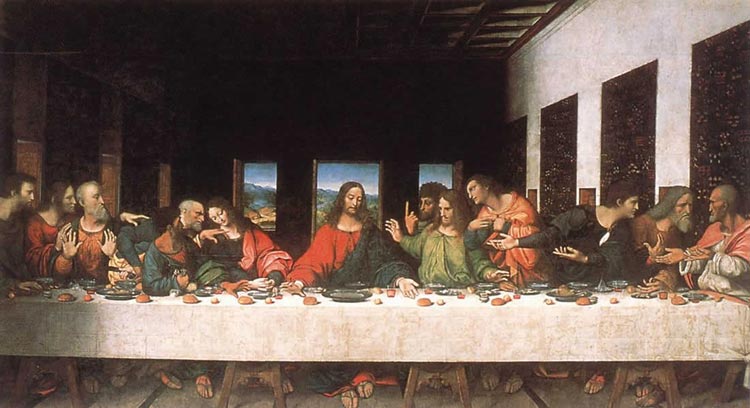
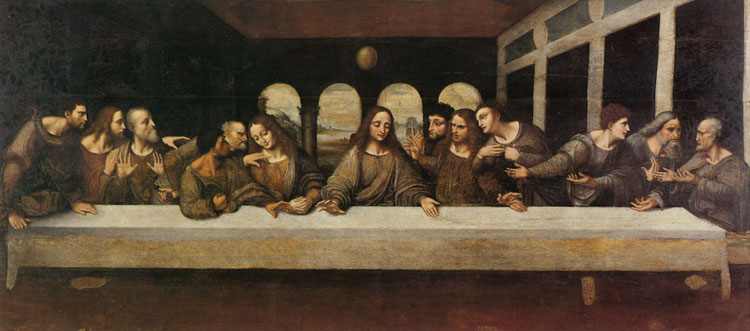
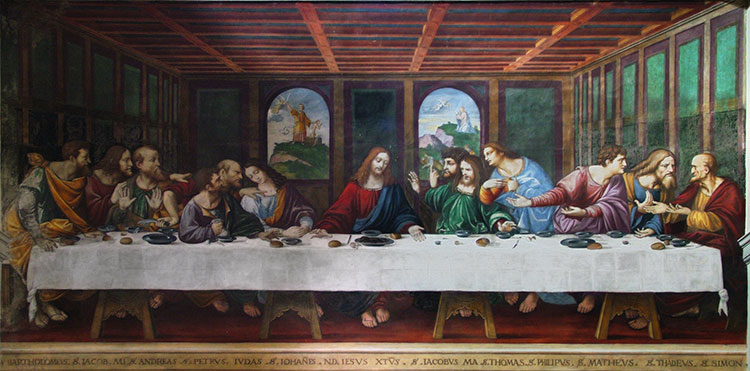

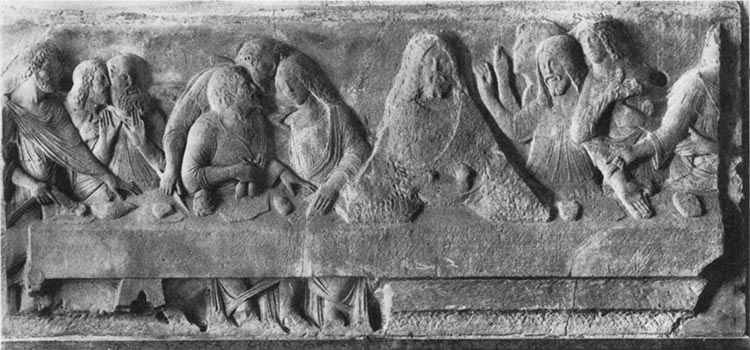
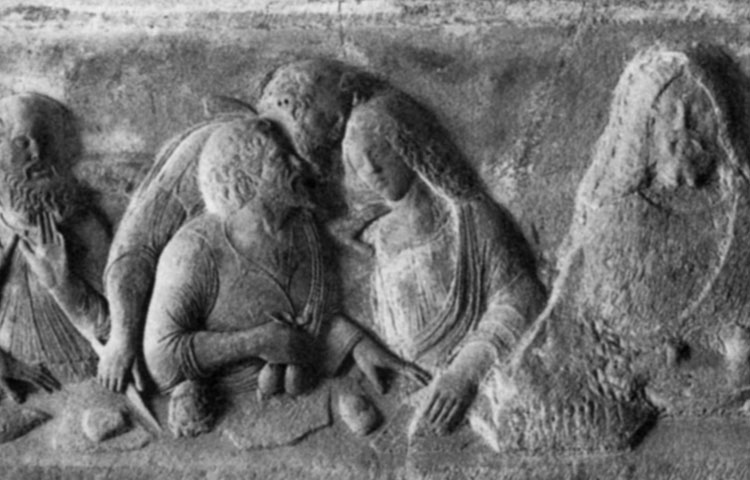
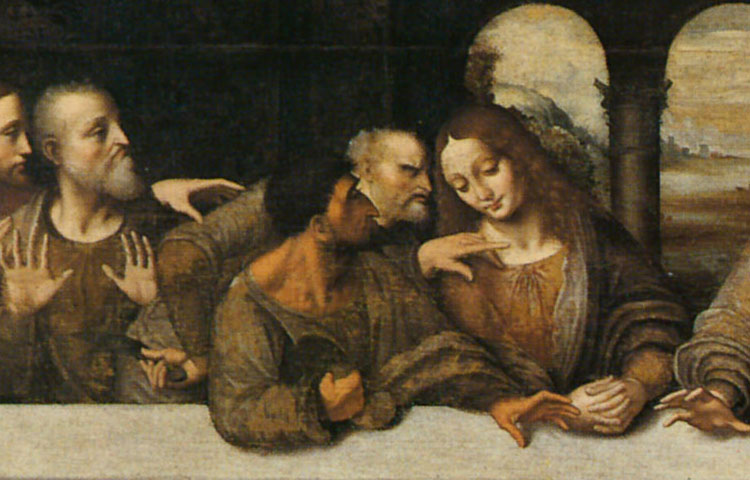

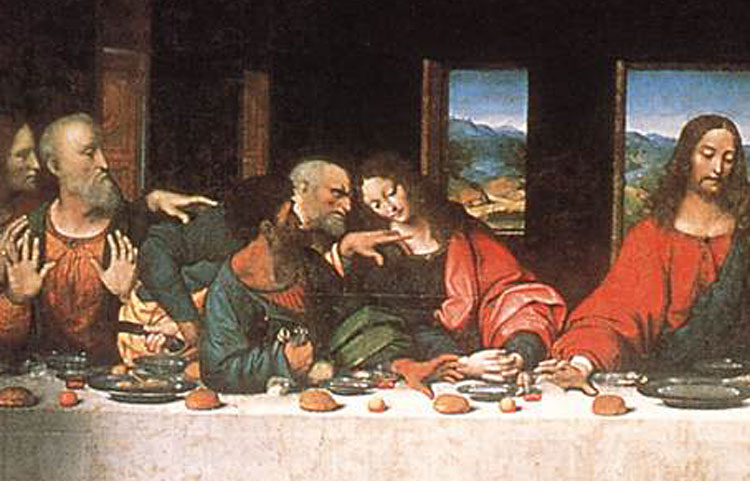
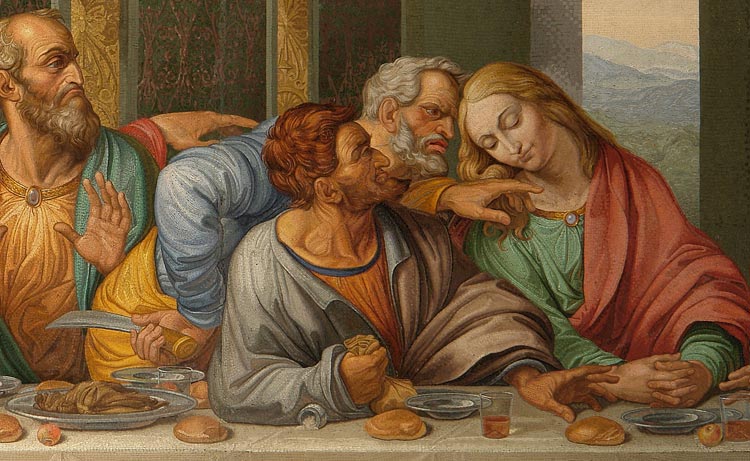

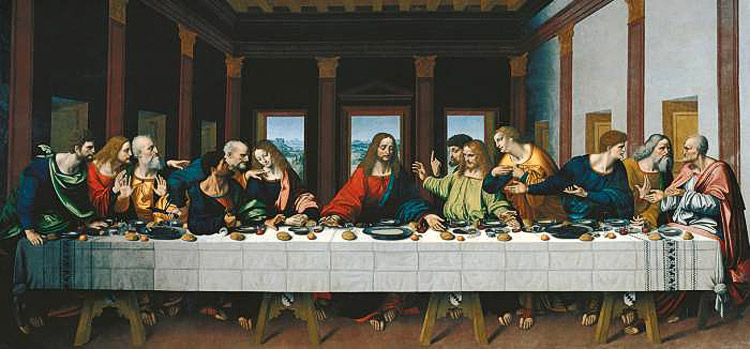

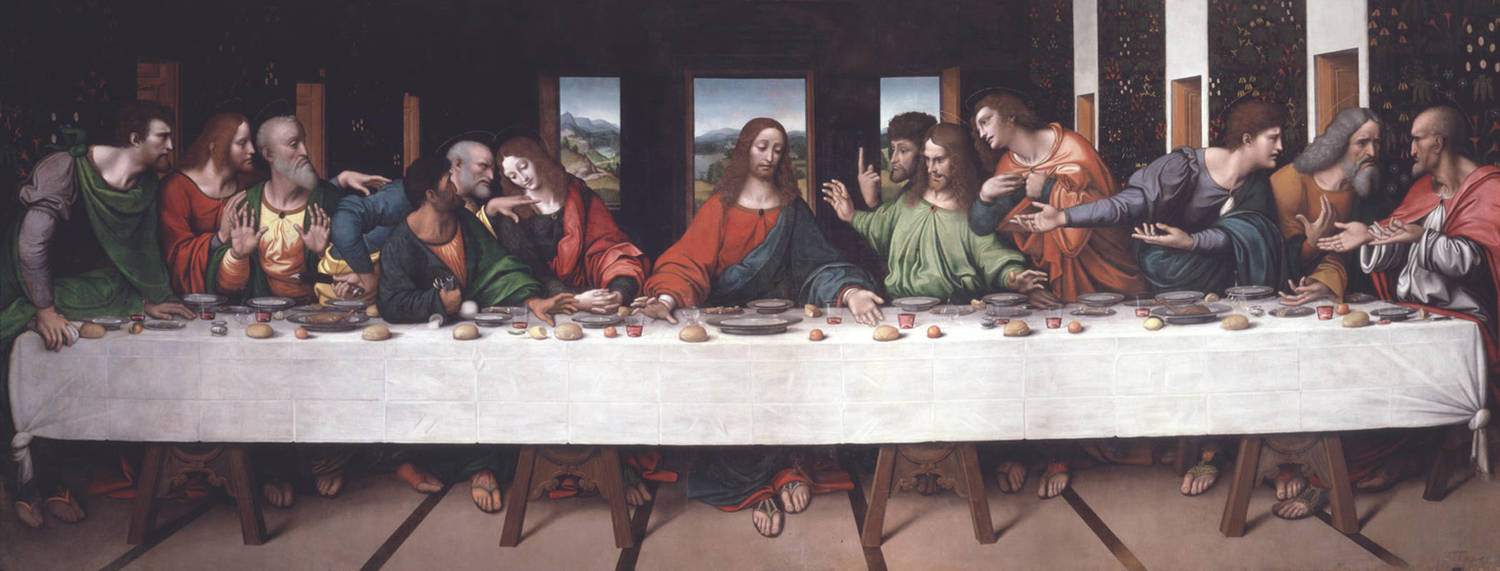
Seating Chart
Bartholomew | Jacob (Minor) | Andrew ||| Judas | Peter | John ||| Jesus ||| Thomas | Jacob (Major) | Phillip ||| Matthew | Thaddeus | Simon
"The Last Supper specifically portrays the reaction given by each apostle when Jesus said one of them would betray him. All twelve apostles have different reactions to the news, with various degrees of anger and shock. The apostles are identified from a manuscript[7] (The Notebooks of Leonardo da Vinci p. 232) with their names found in the 19th century. (Before this, only Judas, Peter, John and Jesus were positively identified.) From left to right, according to the apostles' heads:
Bartholomew, James, son of Alphaeus and Andrew form a group of three, all are surprised.
Judas Iscariot, Peter and John form another group of three. Judas is wearing green and blue and is in shadow, looking rather withdrawn and taken aback by the sudden revelation of his plan. He is clutching a small bag, perhaps signifying the silver given to him as payment to betray Jesus, or perhaps a reference to his role within the 12 disciples as treasurer.[8] He is also tipping over the salt cellar. This may be related to the near-Eastern expression to "betray the salt" meaning to betray one's Master. He is the only person to have his elbow on the table and his head is also horizontally the lowest of anyone in the painting. Peter looks angry and is holding a knife pointed away from Christ, perhaps foreshadowing his violent reaction in Gethsemane during Jesus' arrest. The youngest apostle, John, appears to swoon.
Apostle Thomas, James the Greater and Philip are the next group of three. Thomas is clearly upset; the raised index finger foreshadows his Incredulity of the Resurrection. James the Greater looks stunned, with his arms in the air. Meanwhile, Philip appears to be requesting some explanation.
Matthew, Jude Thaddeus and Simon the Zealot are the final group of three. Both Jude Thaddeus and Matthew are turned toward Simon, perhaps to find out if he has any answer to their initial questions."
Bartholomew
"Bartholomew (Greek: Βαρθολομαῖος Bartholomaíos, Latin: Bartholomaus) was one of the Twelve Apostles of Jesus, and is usually identified with Nathanael (alternatively spelled Nathaniel),[1] who appears in the Gospel according to John as being introduced to Christ by Philip (who would also become an apostle).[Jn 1:43-51]
According to the Synaxarium of the Coptic Orthodox Church, his martyrdom is commemorated on the 1st day of the Coptic Calendar (1st day of the month of "Thout"), which currently falls on September 11 (corresponding to August 29 in the Gregorian Calendar). His feast is June 11 in Eastern Christianity and August 24 in the Anglican Communion and both forms of the Roman Rite of the Catholic Church.
Bartholomew (Greek: Βαρθολομαῖος, transliterated "Bartholomaios") comes from the Aramaic bar-Tôlmay (בר-תולמי), meaning son of Tolmay[2] or son of the furrows (perhaps a ploughman). Bartholomew was born at Cana of Galilee[3] and is listed among the Twelve Apostles of Jesus in the three Synoptic gospels: Matthew,[10:1–4] Mark,[3:13–19] and Luke,[6:12–16] and also appears as one of the witnesses of theAscension[Acts 1:4,12,13]; however, each time he is named in the company of Philip. He is not mentioned by that name in the Gospel of John. Nor are there any early acta,[4] the earliest being written by apseudepigraphical writer who assumed the identity of Abdias of Babylon and to whom is attributed the Saint-Thierry Manuscript and Pseudo-Abdias Manuscripts.[5][6]
Bartholomew has been identified with Nathanial, as presented in John 1:45-51,[3] where Nathanael is introduced as a friend of Philip. He is described as initially being skeptical about the Messiah coming from Nazareth, saying: "Can anything good come out of Nazareth?", but nonetheless, follows Philip's invitation. Jesus immediately appraises him as "Here is a man in whom there is no deception." He reappears at the end of John's gospel[21:2] as one of the disciples to whom Jesus appeared at the Sea of Galilee after the Resurrection."
Jacob (James) Minor
James, son of Alphaeus (Ἰάκωβος, Iakōbos in Greek) was one of the Twelve Apostles of Jesus, appearing under this name in all three of the Synoptic Gospels' lists of the apostles. He is often identified withJames the Less (Greek Iacobos ho mikros, Ἰακώβος ο μικρος Mark 15:40) and commonly known by that name in church tradition. He is also labelled "the minor", "the little", "the lesser", or "the younger", according to translation. He is distinct from James, son of Zebedee and in most interpretations also from James the Just or James, "the brother of Jesus"
1 May (Anglican Communion),
May 3 (Roman Catholic Church),
9 October (Eastern Orthodox Church)
Prep- Sketches
Leonardo spent a lot of time on this painting - most of which was doing research for the various characters/ apostles. He would walk around looking at different people in specific instances and showing different emotions - so he could quickly sketch their movements and expressions. Not only did the people and their expressions need to be researched - so did their composition and how the composition of the painting would look. He most likely made hundreds of other sketches for the painting but these are the ones we have that remain.
Notes:
This is the painting opposite to Leonardo's in the church.
The painting started to fall apart during Leo's lifetime due to his experimenting with a new technique to apply the paint to the wall and damp conditions. I personally think that he could have intended for this to happen to some extent - so that certain things would be revealed as the paint fell away that would show what was painted under-neath. Intentional or not in the last 500 years the painting has gone through many changes and restoration attempts. From earlier copies we can get a better idea about what it originally looked like. Through some of the first photographs of it and others that were taken pre-and-during-and-post restorations we can get an idea about what it looked like and how much it has changed in the last 100 or so years. This is why there are many different images/ pictures/ of the Leonardo's Last Supper that look so different. I'll include as many images as possible to get the "full picture" of the different evolutions this painting has been through. I've also noticed some things from earlier photographs that seem to have been changed during the restorations.
The scene depicted is from the New Testament account when Jesus announced to his disciples that "One of you shall betray me"
Leonardo worked a long time on picking the right models for each character - especially Judas - and it's said that when the commissioners were complaining that he was taking too long to finish (4+years) Leo said that he was having trouble finding the right face for Judas in particular and if they wanted him to go faster he would just use their faces. It's also said that he went to jails to try and find just the right conniving face and expression for Judas.
While working on the painting people watching noted that Leonardo would stand in front of the painting for a very long time - without painting - then make a couple brush strokes and leave for the day.
There has been a lot of confusion over the lack of the "Holy Grail" or the magical/ divine wine glass supposedly present at this scene. While this is something that has been fantasized about and searched for for centuries - it doesn't seem to be something Leonardo included in this painting. There are some wine glasses but nothing particularly special about them. This could be because the Grail Legend became what it was after Leonardo or that the grail legend was an "old wives tale" - Literally meaning that the grail was really "Mary" or Jesus's wife. Grail in that context would mean vessel or womb and when he is talking about his blood he means it as his family - heir(s) and not a metaphor that communion is based on.
From what I've noticed in this painting, especially with his secretive artistic techniques, he definitely intended to make the character to Jesus's Right to be a woman instead of a very feminine "John." There are multiple details that Leo left to demonstrate this and they will be covered in further updates. While there are these types of things in Leonardo's paintings it's unknown (to me) if he had some insight or secret knowledge he was hiding or if he was just being purposely blasphemous against the very corrupted Church at the time. How accurate this is or if it's anything more than artistic interpretation isn't clear. It's important to note that just because he displayed these themes in his art that it doesn't mean they are true. Conversely if you doubt these things are present because they conflict with certain religious beliefs it doesn't mean Leonardo didn't included them intentionally. It is just a painting after-all.
"Giovanni Maria Pala, an Italian musician, has indicated that the positions of hands and loaves of bread can be interpreted as notes on a musical staff, and if read from right to left, as was characteristic of Leonardo's writing, form a musical composition." (I think this is true)

